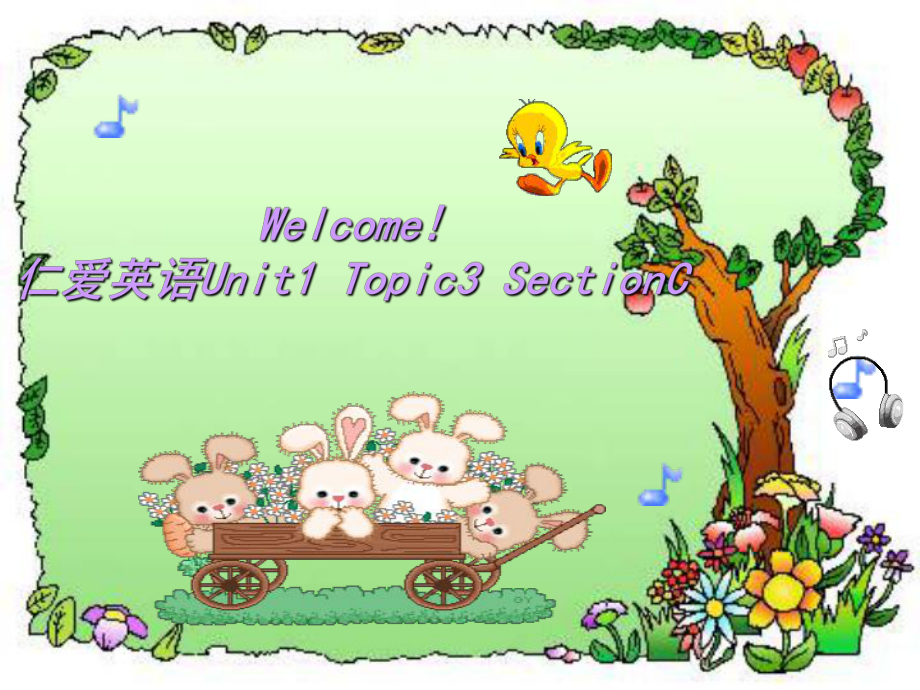《仁愛(ài)版七年級(jí)英語(yǔ)上冊(cè) Unit 1 Topic 3 Section C 課件(共25張PPT)》由會(huì)員分享�����,可在線閱讀,更多相關(guān)《仁愛(ài)版七年級(jí)英語(yǔ)上冊(cè) Unit 1 Topic 3 Section C 課件(共25張PPT)(25頁(yè)珍藏版)》請(qǐng)?jiān)谘b配圖網(wǎng)上搜索�����。
1�����、 學(xué)習(xí)目標(biāo):英語(yǔ)名詞的基本知識(shí)�����、考點(diǎn)�����。學(xué)習(xí)重點(diǎn):總結(jié)可數(shù)名詞單數(shù)變復(fù)數(shù)的變化規(guī)則�����。學(xué)習(xí)難點(diǎn):不規(guī)則名詞復(fù)數(shù)�����。 a和an的區(qū)別1. a 用在以輔音音素開(kāi)頭的單詞前�����。 例如:a book�����, a desk2. an 用在以元音音素開(kāi)頭的單詞前�����。 例如:an egg�����, an applea/an被稱作不定冠詞�����,用在單數(shù)可數(shù)名詞前�����,表達(dá)某一個(gè)人或事物中的一個(gè)�����,相當(dāng)于漢語(yǔ)的“一”, 但不強(qiáng)調(diào)數(shù)目概念�����。a/an用法的區(qū)別: a book a pencil an orangean egg a map 自主學(xué)習(xí):請(qǐng)選擇a或an或不填(用/表示) a pen a bag an apple a big apple a
2�����、 banana an orange / oranges an orange pen What are these in English?Theyre apples. What are those in English?They are books. What are these/those in English?Theyre . pencilsapples erasers boxes four bookseight apples four buses seven boxes Look and learn. Whats this/that? Its What are these/those? T
3�����、heyre a book two books an orange five orangesan eraser three erasers a bus six busesa ruler four rulers a box seven boxes 可數(shù)名詞復(fù)數(shù)變形規(guī)則: (1) 在一般情況下直接在詞尾加-s; 例如: deskdesks penpens pencilpencils carcars appleapples teacherteachers (2) 以-s, -x, -ch, -sh 結(jié)尾的單詞在詞尾加-es; 例如: boxboxes (盒子) busbuses (公共汽車) watc
4�����、hwatches (手表) classclasses (班級(jí)) (3) 以“輔音字母+y”結(jié)尾�����,變y為i, 再加-es�����,如: family-families(家庭) strawberry-strawberries(草莓) (4)以“f或fe”結(jié)尾�����,變f或fe為v, 再加-es�����,如:knife-knives (5)以o結(jié)尾的名詞加es 的有:如:zoozoos photophotos 1.名詞:表示人或事物的名稱�����。2.掌握可數(shù)名詞的單數(shù)和復(fù)數(shù)形式�����。3.不規(guī)則名詞復(fù)數(shù)�����。4.不可數(shù)名詞 合作探究:寫(xiě)出下列各詞的復(fù)數(shù) watch watches child children photo photos
5�����、diary diaries day days foot feet book books dress dresses tooth teeth sheep sheep box boxes strawberry strawberries man men woman women 隨堂精練:請(qǐng)用所給名詞的適當(dāng)形式填空:1. I have two knives (knife) 2. There are many boxes here. (box) 3. There are many buses on the road. (bus) 4. A few boys are drawing on the wall
6�����、. (boy) 5. The children are playing football now. (child) 隨堂精練:請(qǐng)用所給名詞的適當(dāng)形式填空:6. Look at those children. (child) 7. I can see a policeman standing near the door. (policeman) 8. Do you want some potatoes for dinner? (potato) 9. He has two boxes. One is blue , the other is yellow. ( box) 10. Two famili
7、es live in this building . ( family ) 能力提升:1) 請(qǐng)寫(xiě)出下列詞的復(fù)數(shù)形式,沒(méi)有復(fù)數(shù)形式的請(qǐng)劃出 / �����。city cities zoo zoos country countries tooth teeth mouse mice boy boys car cars tree trees horse horses bus buses fox foxes baby babies family families country countries photo photos piano pianos knife knives man men woman women
8�����、 child children foot feet watch watches diary diaries day days book books dress dresses sheep sheep tea /box boxes strawberry strawberriespaper / juice / water /milk /rice / deer deer 2) 填入所給名詞的正確形式1. Please take two photos for me. (photo) 2. I like the red tomatoes. (tomato) 3. Would you please clean your teeth now? (tooth) 4. Do you want some milk? (milk) 5. There are ten women teachers in our school. (woman teacher) 3)選擇正確的詞形 1. There are 36 (boys, boies) in my class. 2. Look at those (sheeps, sheep). 3. I don t want (a, an) old cup. 4. Give me that (box, boxes), please.
 仁愛(ài)版七年級(jí)英語(yǔ)上冊(cè) Unit 1 Topic 3 Section C 課件(共25張PPT)
仁愛(ài)版七年級(jí)英語(yǔ)上冊(cè) Unit 1 Topic 3 Section C 課件(共25張PPT)

